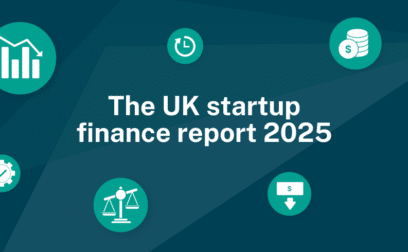TABLE OF CONTENTS
Page written by Chris Godfrey. Last reviewed on June 6, 2025. Next review due April 6, 2026.

Ideal for businesses that own a cluster of properties, property portfolio loans can eliminate the hassle of managing multiple commercial mortgages and let you buy your real estate with just one umbrella deal.
Property portfolio loans, (also known as portfolio mortgages), are a type of business loan designed for landlords or property investors who own multiple buy-to-let properties – residential and commercial. Instead of managing separate mortgages for each property, a portfolio loan allows owners/investors to consolidate several properties under a single loan agreement, streamlining administration and potentially reducing costs.
Property portfolio loans combine multiple income-producing properties in one loan package.
Key features include:
Investors, entrepreneurs, landlords, corporations, social housing co-operatives – if you have multiple income-producing properties, a property portfolio loan could work for you.
Property portfolio loans allow landlords and investors to finance multiple properties under one agreement, simplifying management and reducing costs. The loans offer flexible terms, streamlined administration, and can unlock equity across the portfolio for reinvestment. Their structure may also enhance cash flow, supporting expansion, and improving borrowing power, making it ideal for professionals looking to scale or consolidate their property investments more efficiently.
Property portfolio loans can benefit companies with multiple properties by reducing administrative burden, improving cash flow and lowering costs. This type of loan can also enable efficient equity release for reinvestment and support strategic portfolio growth, making them a good fit for companies managing multiple property assets under a single corporate structure.
Savvy commercial property developers and buyers use property portfolio loans to improve cash flow and gain easier access to capital for new acquisitions or developments. The loan structure may help support efficient scaling, maximising leverage, and enhancing potential investment returns – important considerations for professionals managing diverse or expanding commercial property portfolios.
Property portfolio loans can be used to finance almost any type of income-producing property.
Like all financial products, property portfolio loans have their pros and cons.

Pros

Cons
Property portfolio loans and commercial mortgages can be used to buy commercial properties, but there are significant differences between these financial products.
| Feature | Property Portfolio Loans | Individual Commercial Mortgages |
|---|---|---|
| Purpose | Finance multiple properties under one umbrella loan | Finance a single commercial property |
| Typical borrower | Landlords and investors with several income-producing properties | Businesses or investors purchasing one property |
| Loan structure | One loan facility secured against several properties | One loan secured against one property |
| Assessment | Based on aggregate rental income and portfolio value | Based on income/value of the single property |
| Management | Single monthly payment to one lender for all properties | Separate terms and payments for each property |
| Flexibility | Can move equity between properties, easier refinancing | Less flexibility. Each property stands alone |
| Lender pool | Fewer specialist lenders, more complex underwriting | Winder lender choice for standard commercial deals |
| Interest rates and fees | May offer lower interest rates for larger portfolios. Arrangement fees apply | Rates depend on property and borrower profile |
| Risk | Risk spread across portfolio. Default may affect all | Risk isolated to individual property |
Identify lenders who specialise in property portfolio loans. Compare their rates, eligibility criteria, and terms, as requirements and definitions of a ‘portfolio landlord’ can vary. If you are unsure where to start, our specialist commercial mortgage team at Swoop can help.
Lenders require comprehensive information to assess your application. Typical documents include:
Complete the lender’s application form. Include all required documentation, such as your property schedule and financial records. Some lenders may require you to complete additional forms if there are multiple applicants or if you are applying as a limited company.
The lender will assess your overall financial position, credit history, the value and rental income of your properties, and your experience as a landlord. Your entire portfolio will be stress-tested, and the lender will check that you meet their loan-to-value and income coverage requirements. For limited companies, company accounts and personal guarantees from directors are typically required.
The lender will instruct valuations on your properties. If the portfolio and your financials meet their criteria, you’ll receive a formal mortgage offer.
Once all legal checks are complete, the funds are released and your portfolio mortgage is set up.
Every property portfolio loan lender will have a unique loan criteria and methodology, which means applying one by one could be a slow and intensive process. Alternatively, you could fast track your application by using the services of a financial marketplace that gives you access to a wide range of property lenders with just one application. Not only does this tactic save you time, it can give you loan comparisons that let you choose the best deal for your situation.
Not all property lenders are equal. Points to consider when searching for your portfolio loan:
There are many ways to finance income-producing properties:
Bridging loans can provide short-term funding for property investors needing quick access to capital—typically for purchases, auctions, or renovations. Secured against property, they ‘bridge’ the gap until long-term finance or a sale completes. Bridging loans are fast to arrange, often within days, with terms ranging from a few weeks to 36 months. Interest can be rolled up or paid monthly. Ideal for time-sensitive deals, these loans offer flexibility but come with higher rates and fees, so a clear exit strategy is essential.
Buy-to-let mortgages are designed for individuals or companies purchasing property to rent out. Unlike residential mortgages, approval is based on the property’s rental income potential, not just the borrower’s income. Typically requiring a larger deposit (usually 20–40%), these loans can offer interest-only or repayment options. Lenders assess affordability using rental stress tests, and rates can be fixed or variable. These mortgages can be held personally or through a limited company, and profits may be subject to income or corporation tax depending on ownership structure.
Commercial remortgaging involves replacing an existing mortgage on a commercial property with a new loan, either with the same or a different lender. Investors or businesses usually do this to secure better interest rates, release equity for reinvestment, fund renovations, or consolidate debt. Remortgaging can improve cash flow by extending the loan term or switching to interest-only payments and is particularly useful when a fixed-rate period ends or property value increases, allowing for more favourable terms.
Property portfolio loans can be highly complex and are available from fewer lenders than standard commercial mortgages. Getting the right deal at the right price and on terms to suit your business can be difficult without professional help. Swoop have the experts to help you close the deal. Get support with your portfolio loan application. Reshape your property financing today.
Chris is a freelance copywriter and content creator. He has been active in the marketing, advertising, and publishing industries for more than twenty-five years. Writing for Barclays Bank, Metro Bank, Wells Fargo, ABN Amro, Quidco, Legal and General, Inshur Zego, AIG, Met Life, State Farm, Direct Line, insurers and pension funds, his words have appeared online and in print to inform, entertain and explain the complex world of consumer and business finance and insurance.
Swoop promise
At Swoop we want to make it easy for SMEs to understand the sometimes overwhelming world of business finance and insurance. Our goal is simple – to distill complex topics, unravel jargon, offer transparent and impartial information, and empower businesses to make smart financial decisions with confidence.
Find out more about Swoop’s editorial principles by reading our editorial policy.
Related pages
Get your free Property portfolio loans quote today
Join the 110,000+ businesses just like yours getting the Swoop newsletter.
Free. No spam. Opt out whenever you like.



























We work with world class partners to help us support businesses with finance
Kingfisher Way, Silverlink Business Park, Newcastle upon Tyne, NE28 9NX, UK
View in Google MapsAberystwyth Innovation and Enterprise Campus
Gogerddan Campus
Aberystwyth University
Ceredigion
SY23 3EE
Dogpatch Labs, The CHQ Building, Custom House Quay, Dublin, Ireland
View in Google MapsSuite 801, Level 8, 84 Pitt Street, Sydney, NSW 2000, Australia
View in Google Maps43 W 23rd St, New York, NY 10010, United States
View in Google Maps21 Dreyer Street, Cape Town, South Africa, 7708
View in Google Maps
Disclaimer: Swoop Finance helps UK firms access business finance, working directly with businesses and their trusted advisors. We are a credit broker and do not provide loans or other finance products ourselves. We can introduce you to a panel of lenders, equity funds and grant agencies. Whichever lender you choose we may receive commission from them (either a fixed fee of fixed % of the amount you receive) and different lenders pay different rates. For certain lenders, we do have influence over the interest rate, and this can impact the amount you pay under the agreement. All finance and quotes are subject to status and income. Applicants must be aged 18 and over and terms and conditions apply. Guarantees and Indemnities may be required. Swoop Finance can introduce applicants to a number of providers based on the applicants’ circumstances and creditworthiness. Swoop Finance Limited is registered with the Financial Conduct Authority as an Account Information Services Provider (reference number 833145). Swoop Finance Limited is authorised as a credit broker under FCA registration number 936513. If you feel you have a complaint, please read our complaints section highlighted above and also contained within our terms and conditions. Swoop Finance Ltd is registered with Companies House (company number 11163382, registered address The Stable Yard, Vicarage Road, Stony Stratford, Milton Keynes MK11 1BN). VAT number: 300080279
Clever finance tips and the latest news
Delivered to your inbox monthly
Join the 110,000+ businesses just like yours getting the Swoop newsletter. Free. No spam. Opt out whenever you like.
Thanks for requesting a call back
a member of the team will be in touch.




